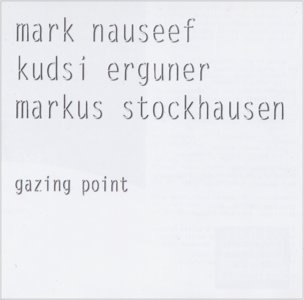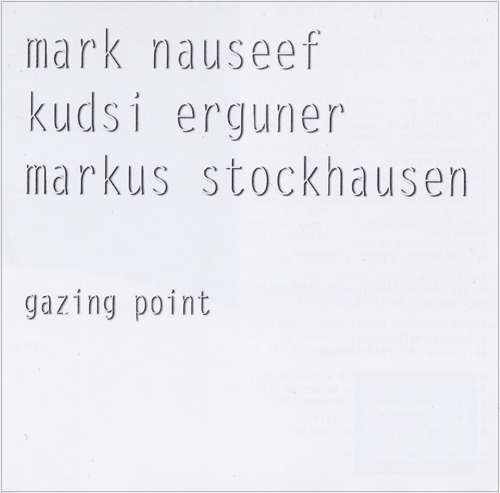Mark Nauseef, Kudsi Erguner, Markus Stockhausen - Gazing Point
World fusion | 2003 | MP3 320Kbps¬124 MB
Time 51:23 | Front Cover
World fusion | 2003 | MP3 320Kbps¬124 MB
Time 51:23 | Front Cover
Yoga is the ability to direct the mind exclusively toward an object and sustain that direction without any distractions (from the great Indian sage Patanjali, more than 2000 years ago) GAZING POINT is an audio excursion or bridge leading to the other side of conditioned existence. Each title is based on yogic teachings dealing with the process/practice of meditation. Meditation is often thought of as a mean of returning to man's real home-God through methods which take one beyond maya (cosmic illusion) to a state of clarity and peace. The musicians involved in this recording have had various experiences in meditative musics. Master ney player Kudsi Erguner, a Mevlevi disciple, was exposed to the Mevlevi Sufi musical tradition while playing the ney in Dervish ceremonies alongside his father and has been featured on several well known recordings devoted to sufi music. The Mevlevi order, founded in the 13th century by the great theologian Mevlana Jalalu'ddin Rumi, is the most famous of sufi groups. The ney was/is played during ecstatic dances in trance ritual of the Mevlevi branch of Sufism known also as the "Whirling Dervishes". Markus Stockhausen, son of Karlheinz Stockhausen, has collaborated extensively with his father and has been a featured soloist in many of his fathers operas with themes often dealing with spirituality and mythology. The main interests of Markus, as a trumpet player, are contemporary music and improvised music including his own kind of devotional, intuitive music which trancends all musical styles. Markus has performed with percussionist Mark Nauseef whose wide musical vision includes "hands on" research, study and performance in musical traditions ranging from Indian, Javanese, Balinese, and Ghanaian musics to western contemporary and improvised musics. In the duo perfomances with Markus, as well as on this recording, Mark is performing mostly on a collection of temple bells from China, India, Japan, and Tibet where these instruments are often used to stun the mind and capture the awareness in meditation. What should be noted first about this music is that there are no electronic processing techniques or effects used other than slight use of reverb. The sounds are all acoustic. The bell`s long sustained tones are produced by rubbing a stick around the edge of the bell in a motion which can vary the speed of the vibrato and the intensity of the dynamic. The bells vary in size from 70 millimetres in diameter (Japanese Rin) to 46 cm (Chinese Temple Bells). Eighteen bells were used. The bell`s vibrato is also achieved through a technique known as ululating*, where the player`s mouth is used to change the sound.
Tracks:
*01.- Samasthitih (fr. sanskrit = equal standing) firm grounding with an open heart, even balanced posture.
*02.- Gazing Point focus/concentration on a single point either outside such as the tip of the nose, center of the eyebrows, an object, the horizon or inside using the "inward eye".
*03.- With Breath staying with full, even inhalation and exhalation as a mantra for concentration/relaxation.
*04.- The Inward Ear withdrawl and restaint of the senses, with the exception of hearing the music, so that they may not distract the concentrated mind.
*05.- Stun The Mind establishing stillness in concentation.
*06.- Laghima complete absorption within and of the music while maintaining a direct uninterrupted attention with the object of meditation.
*07.- Dive peace, clarity, lightness.
Personnel:
*Kudsi Erguner: ney
*Markus Stockhausen: trumpet, flugelhorn
*Mark Nauseef: bells, wood, goings
My Blog. Enjoy }i{



